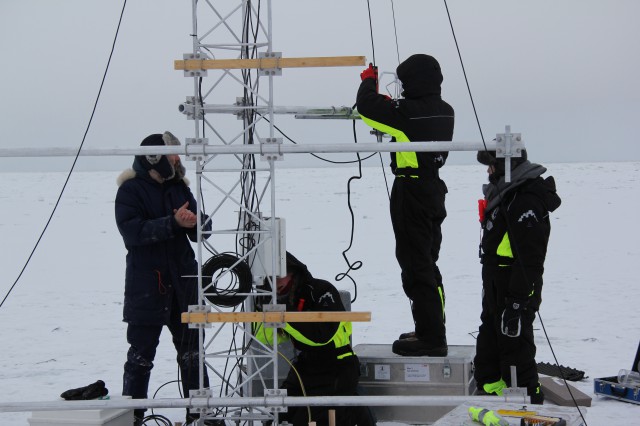Norwegian scientists, currently on campaign in Finland, conduct their first autonomous landing with a model aircraft packed with weather sensors. This marks the next step in the process of automating meteorological data retrieval.
For weather research, radio probes are used in a balloon-packed sensor pack. Then the whole package disappears with the wind and gets lost. Each package, which can only be used once, costs about 3,000 kroner.
“And we are not so often interested in what happens in the highs up to 25 kilometers, as the radio sounds reach, but only the lower one to two kilometers. Then we will send a SUMO.”
15 flights and it pays off
A SUMO (Small Unmanned Meteorological Observer) costs 40,000, but can be used repeatedly.
“After around 15 flights it will be cheaper than with the weather balloons,” explains Professor of Experimental Meteorology at the Geophysical Institute of Bergen University, Joachim Reuder.
In a three-week campaign in France, they conducted 200 measurements with three SUMO flights to 1600 meters in height.
“With weather balloon it would have cost over half a million,” he says.
The three planes they used during the campaign in France definitely cost less than half the million it would cost to use weather balloons. In addition, some of the three aircraft are still in use
He is currently in Finland on a major international campaign, with researchers from Bergen, Finland, Germany and the United States. They are one month at the northern part of the Baltic Sea, on a small island about 20 kilometers west of the city of Oulu. Here they will gather the most possible meteorological information.
The difficult temperatures near the ground
The researchers collect data on wind conditions and temperature targeting to understand the turbulent exchange processes in the atmosphere near the ground.
“Forecast models still have significant problems by alerting ground temperatures in very cold conditions,” says Reuder.
He tells that the reported temperature of the models is usually correct at 10 to 20 meters above the ground.
But if you leave the house in the morning, it can easily be 10 to 15 degrees colder. It is precisely this cooling – in the last few meters – that the models so far do not bring. Here we hope to improve the way turbulence is treated in the numerical models, to get the last bit right, or at least better, he says.
Six different UAVs
And it would have been definitely more expensive without the drones .
“The unmanned drones play a very important role in the campaign. The different institutions carry their unique drones, with the instruments they need.
From the University of Bergen they have the previously mentioned SUMO . The small aircraft has sensors for temperature, humidity and wind. But it can also measure air pressure and temperature on the surface via infrared measurement.
It is based on a model airplane kit set in plastic that anyone can buy from FunJet by Multiplex. It’s basically a model aircraft that has been developed in a collaborative venture between the Geophysical Institute and a small company in Germany (Lindenberg & Müller Gmbh).
Open source
It has also been in partnership with Paparazzi , an open source code community for drone hardware and software project for autopilot systems and base station software for everything from multicopters to hybrid aircraft.
This means that the micro plane can fly predefined routes, which can be changed at any time via a two-way data link (2.5GHZ).
“Only start and landing is usually done manually, but can also be automated,” says Reuder.
In the video at the top of the case, you can see researchers at the University of Tubingen landing their Multi-Purpous Ariborne Sensor Carrier (MASC-3) automated for the first time.
Balloons are still very important
Theoretically, the plane can go as high as 5 kilometers.
“But, of course, it depends on the flight permit we can get. Here in Finland we have blocked airspace that we can operate up to 1900 meters above the ground or the sea, he says.
It does not mean that they put all use of balloons on the shelf.
“No, the weather balls still exist and they are still very important. Mainly because they reach altitudes up to 20 or 25 km. And it is important entry information for all weather forecast models.
Source: TU


